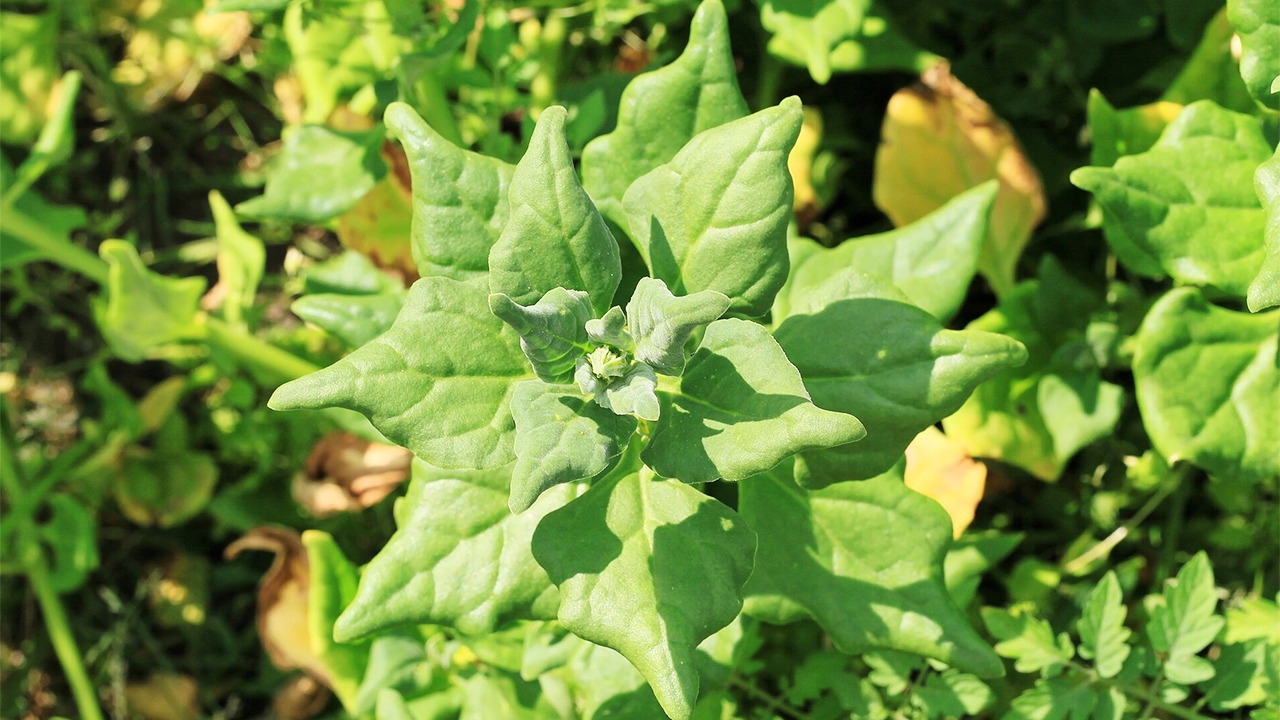
New Zealand spinach, Tetragonia tetragonoides, is a flowering plant in the fig-marigold family (Aizoaceae) and is often cultivated as a warm weather substitute for spinach.
Its natural habitat is sandy shorelines and bluffs, so it also grows well in salty soils.
NZ spinach was first mentioned by Captain Cook, who picked, cooked, and pickled it to help fight scurvy with the crew of the Endeavour. Plants came into New World use when the explorer and botanist Joseph Banks took seeds back to Kew Gardens during the latter half of the 18th century
The plant has a trailing habit and should be grown on trellises or stakes like pole beans. Easily grown in the garden, it is cultivated for the thick, edible leaves or possibly as an ornamental plant for ground cover. Once established, the plants tolerate drought and are very tolerant of hot, dry conditions. However, the flavor is best with consistent moisture. It can become a perennial in mild climates. Few insects infest the plants and even slugs and snails do not seem to bother it.
As the name signifies, NZ spinach has a similar flavor and texture to spinach when cooked. Like spinach, it contains oxalates, which can be removed by blanching the leaves in hot water for one minute, then rinsing in cold water before cooking. After cooking, New Zealand spinach is 95% water, 2% carbohydrates, 1% protein, and contains negligible fat with only 12 calories per serving. It’s also rich in vitamin K, providing 278% of the Daily Value and contains appreciable amounts of vitamin B6, vitamin C, and manganese.
The thick seeds should be planted just after the last spring frost. Before planting, the seeds should be soaked for 12 hours in cold water or 3 hours in warm water. The seedlings will emerge in 10–20 days, and it will continue to produce greens through the summer.
Seeds can be purchased from Botanical Interests at only $2.49 a pkt.
